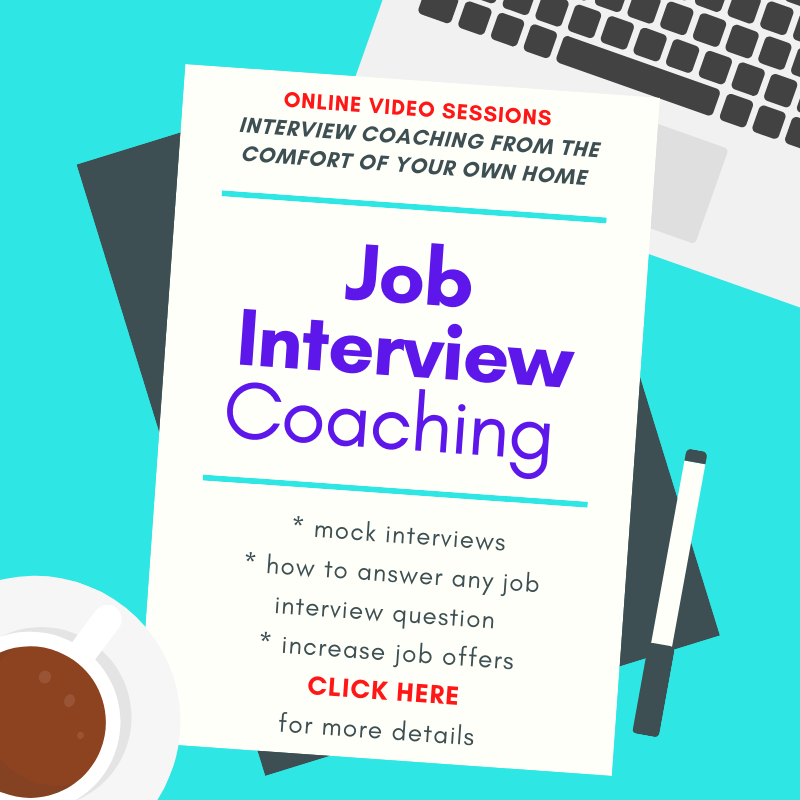The CEIAG Job Interview lesson plan can be used to meet GATSBY benchmarks: 1 – a stable careers programme, and 2 – learning from careers and labour market information. Activities can be tailored to focus on a specific curriculum and job sector, supporting GATSBY benchmark 4 linking curriculum learning to careers, or as a more generic career guidance session.
This session is suitable for high school, further education, and higher education students.
CEIAG Lesson Plan Details – designed to be a flexible lesson plan which can be easily adapted to suit the needs of the class.
Duration: 60 minutes
Number of pupils: 10-30
Each interview activity last for 60 minutes, the whole lesson plan can be delivered as a CEIAG drop-down day event or each activity can be delivered on its own.
CEIAG Job Interview Lesson Plan – Activity 1
Become a confident speaker
The activity objective is to increase confident communication and can be used as an ice breaker as part of a full-day interview lesson plan or as a confidence-building activity.
Aims:
- Increase confidence when speaking off the cuff
- To learn how to give a detailed description
- Become competent when answering ad-hoc questions
Each pupil in turn will stand in front of the class (or within small groups) and takes a question out of a box. The pupil then answers the question, taking between 1-2 minutes
Example questions:
- If you could go back in time, what year would you return to?
- If you could have a superpower, what superpower would you choose?
- Tell me about your best holiday
- Describe what you will be doing in 10 years’ time
- What do you prefer carrots or sprouts and why?
- Convince the class that a caravan holiday in the UK is better than a summer holiday abroad
- If you were the prime minister for a day what would you do?
- What do you prefer cats or dogs and why?
Once all the group have answered a generic question, ask the group what collectively they could improve to deliver a better speech. Answers often include:
- Use less urms and arghs
- Slow down
- Speak straight away
- Give more detail
- More around
- Gesture and eye contact
Using the advice, ask the pupils to repeat the speaking exercise using a new set of questions
CEIAG Job Interview Lesson Plan – Activity 2
What is an interview?
The key objective is for learners to recognise that they are likely to attend multiple interviews throughout their life
Aims
- Recognise different environments where interviews will take place
- Understand what a structured interview is
- Learn the 3 rules for a successful job interview
Ask the class ‘when are you likely to be interviewed?’ Common answers will include:
- Job interview
- College interview
- University interview
- Apprenticeship interview
- If you are famous
Explain that career data has found that most people will have 3 careers in their life, and its common for career professionals to change organisations once every 3-5 years. Most people attend 6 job interviews before being offered a job role.
In groups, ask the pupils discuss what happens in a job interview (for 5 mins). Ask different groups for their opinions. Explain that most organisation use a ‘structured job interview process’ this is where the interview panel ask the same questions to each interviewee. Their interview answers are then scored on a pre-set scale, often between 1-4, with 4 being the highest score. Points are awarded by the interviewer cross referencing the interview answers against a pre-written list of criteria for each 1-4 points.
Research has found that the top two interviewees only have a score difference of 1 or 2. That means if the other interviewee gains 3s across all the interview questions, and you get all 3s and one 4, you will be offered the job role.
State, the 3 rules for a successful job interview are:
- Identifying the job criteria
- Being a self-promoter
- Communicating with confidence
Ask the class, what each rule means:
- Identifying the job criteria
Understanding what skills, qualities, experiences, and qualifications the employer requires for the advertised job position. The interview questions will be based on the job criteria. Therefore, by knowing the job criteria a job applicant can predict the interview questions and prepare detailed job interview answers.
- Being a self-promoter
Being able to ‘sell’ yourself is key in a job interview. Never downplay your experiences and skills, and instead talk in detail about specific tasks you completed.
In groups ask the pupils to spend 10 minutes selling an item: a banana, a new style of pen, a pair of spectacles. Each group then ‘sells’ their item, focusing on the item’s benefits. After a group has ‘sold’ the item, ask the rest of the class if there are any other benefits that the group could have mentioned.
- Communicating with confidence
Confident speakers don’t use filler words, have awkward pauses, or talk too quickly. They also give more detailed answers, have better eye contact, and naturally gesture. Ask the group to mention famous (good) speakers and ask what they liked about their speaking style.
Summarise by asking what the three job interview rules are.
Finally, ask about other types of job interviews:
- Group interview where applicants get involved in a group task. Employers here look at team work, leadership, and communication skills.
- Test interview – often a Math and English test. Common in high skilled roles.
- Role-playing, to look at how an interviewee would act in a particular situation.
- Artificial intelligence robot interview – a new style of interviewing for large organisation’s. This is a video interview conducted by an AI bot. candidates are asked 3 interview questions which have to be answered within a set time frame. The AI bot then cross-references the answers against the job criteria before the successful applicants move to a human round of interviews. This is replacing the telephone screening interview process.
CEIAG Job Interview Lesson Plan – Activity 3
First impressions
The objective is to understand that we make generalisations when meeting someone new and how these opinions are often wrong
Aims:
- Understand what stereotyping is
- Become more aware of what makes good first impression in a job interview situation
- How to promote yourself verbally and non-verbally
Show a pictures of around 5 different people. Ask, on first impressions who would you offer a job to and why. Give each group 5 minutes to discuss and then ask each group to feedback.
Explain how everyone stereotypes and makes opinions within milliseconds of meeting someone. Opinions are often created based on the culture of the country we grew up in, home life and personal experiences, values, and beliefs.
Ask the whole class what factors make a good or bad first impression? Common answers include:
- What the person is wearing
- Age
- Makeup
- Tattoos
- Gender
- Race
- Eye contact
- Posture
- What they say/sound like
Ask the group who would be best for the following job role, and ask for reasons:
- Engineer – a male or female
- Computer game designer – an older or younger applicant
- Customer service advisor – an overweight individual or an average-weight person
Explain that initial opinions are stereotypes. At this point we know nothing about the person. Repeat the questions again but give more context:
- Engineer – a male who has recently left university or a female with 10-year engineering experience
- Computer game designer – an older who invented the first gaming app or a younger applicant with 3 years experience in coding
- Customer service advisor – an overweight individual with a level 3 customer service qualification and 6 years of customer service experience or an average-weight person with 3 years of telephone communication experience and a level 2 customer service qualification
***this often results in pupils requesting more detail about the characters.
Ask the group to design the perfect interviewee. On a flipchart draw the elements the group state. This may include a suit, briefcase, hairstyle, etc
In small groups ask what the ‘perfect’ interviewee could initially say when first meeting the interview panel to help create a positive first impression. At the end of 5 minutes, ask each group to state their prepared sentences. Ask the larger class for feedback on the introduction. This can include verbal and nonverbal communication.
CEIAG Job Interview Lesson Plan – Activity 4
How to answer job interview questions
Become better skilled at answering job interview questions is the main objective for this activity
Aims:
- Understand the SAP (situation, action, and positive outcome) model – an easier version of the STAR technique for school/college leavers
- Become confident at answering interview questions
- Better understand the job interview process
Explain that most job interviews last around 45 minutes with 2 or more interviewers asking, on average 8 job interview questions. The initial question is often ‘tell me about yourself?’ and the final question is ‘ do you have any questions for us?’
The middle 6 questions are often questions related to the job criteria – the duties and/or skills required for the main part of the job role.
Ask the group what the main job duties are for:
- Engineer
- Customer service advisor
Ask, with these duties in mind what questions will the interview ask? Write these on a board.
Example include:
- Do you have experience of (duty)?
- What do you do in X situation?
- Give me an example of working in a team?
Explain the SAP (situation, actions, and positive outcome) technique. When giving an example of part of an interview answer use the SAP technique:
- Situation – in one sentence describe the situation “I was asked to (solve a problem) help set up a fundraising activity”
- Actions – describe specific actions you took “to do this, I first did X, then I did Y, and finally I Z”
- Positive outcome – state what happened after the actions “this resulted in a great cake bake sale where we raised over £60 for the charity”
Split the class into pairs, ask each pair to pick 3 of the interview questions on the board, and ask them to prepare an interview answer. Give at least 15 minutes for this task.
As for a volunteer to be interviewed. Pick one of their chosen interview questions and ask the pupil to answer it. Focus here on content not delivery. Break down the answer. Did they:
- Give a detailed answer?
- Did they describe the situation?
- State, in detail, the actions they taken
- Was the positive outcome mentioned?
- Was the language positive and self-promotion?

CEIAG Job Interview Lesson Plan – Activity 5
Become confident at answering multiple interview questions.
This activity can be completed as a ‘mock interview’ using local employers or teachers, or within the class with students interviewing each other.
First ask the pupils to take the teenager interview test to help them understand how they currently perform in a job interview: interview test
Choose interviewees and interviewers.
Each interviewer is given a common list of interview questions for a generic customer service role:
- Do you have any experience in customer service, please share an example?
- Give me an example of communicating something to another person?
- Tell me about a time you were involved within a team?
- Do you have an example of putting 100% into a task?
- Have you ever had to plan for something, what did you do?
The interviewers ask one question to one interviewee, and then the interview moves to the next interviewer who ask the second question (this way the interviewers only ask the same questions to the different interviewees)
At the end of the interviewing, ask for feedback:
- What was it like being interviewed by different interviewers – what was the difference in their approach?
- Interviewers, give an example of a great answer.
- Did you feel nervous as the interviewee or interviewer?
- What did you learn from your role?
- What could you do to improve your interview skills
- Did everyone find it easy using the SAP technique?








